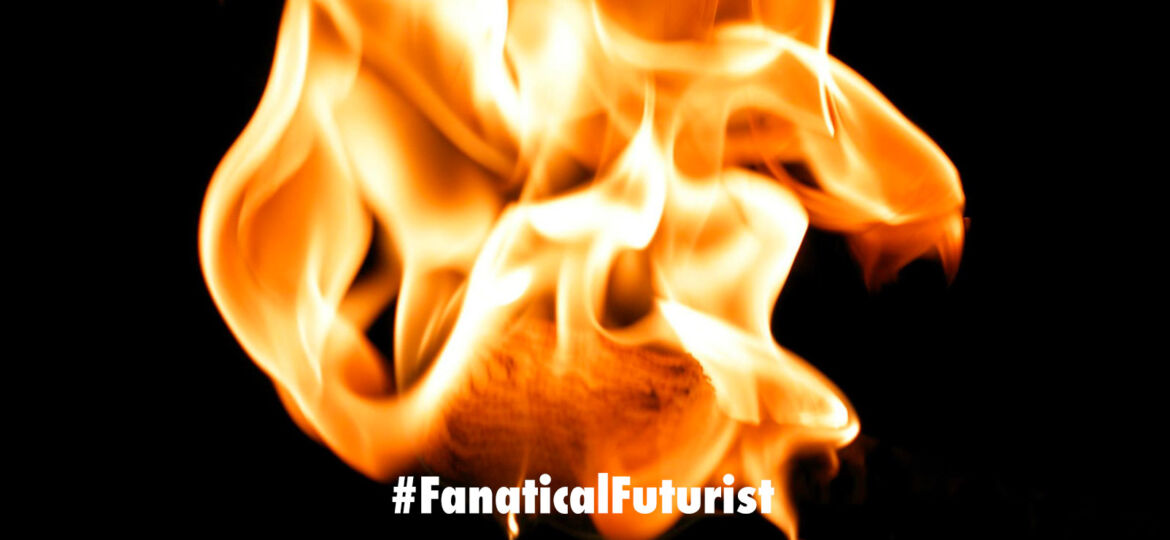
WHY THIS MATTERS IN BRIEF
The ability to 3D print explosives is a turning point for the military and other industries that rely on explosives, but it also opens up a debate on the potential dangers of the uses of the technology.
According to new research out of the US, yes, it is now safe to 3D print explosives, and for a moment there here was I thinking it wasn’t. But what do I know? Over the past couple of years it’s become increasingly evident that additive manufacturing, or to call it by its other name 3D printing, will continue to be one of the biggest ways engineers look to construct increasingly complex designs and materials, from 3D printing skyscrapers in Dubai, and homes in France, to printing completely new and alien alien space materials, and even space stations and habitats on Mars, that are now being used and explored by NASA.
All that said though, following on from another team of researchers who 3D printed munitions for 3D printed grenade launchers, one group of engineers just used the process to craft something truly unique. A team of researchers from Purdue University just invented a way to 3D print materials like Thermites and Nanothermites to create explosive devices and materials.
See the technology in action
In short, this means that energetic materials like explosives and pyrotechnics, think everything from C4 like materials to fireworks, can now be safely 3D printed. The team involved managed to use their knowledge of energetics and injection deposition printing systems to create a new type of 3D printer – one that’s able to put two substances onto a substrate in a particular and highly specific order where the inert materials combine together to form a Nanothermite – a substance made of nanoparticles that doesn’t release its high energy without being ignited or from another stimulus.
Doctoral student Allison Murray was a key part in building the 3D printer capable of carefully printing nanothermite materials. Unlike other styles of 3D printers Murray’s printer uses a stationary nozzle and a moving platform, that can move with just a micro of precision, rather than a moving nozzle. Murray also said the project combined two seemingly unrelated fields of interest together to create a surprisingly functional result.
“Energetic materials is a fairly understood field, and so is additive manufacturing,” Murray said. “What’s unique about this project is the intersection of those two fields, and being able to safely deposit energetic materials with this level of precision.”
The 3D printed samples of Nanothermite were then ignited and set off as part of the research and the team got to blow up their creations for analysis. Each sample was set off electrically. The researchers used high-speed thermal imaging as well as scanning transmission electron microscopy (STEM) to see just how powerful their printed creations were.
“It burns at 2,500 Kelvin [over 4,000 degrees Fahrenheit],” Murray said. “It generates a lot of thrust, a lot of heat, and makes a nice loud shockwave!”
The team said they hope that the work can prove the usefulness and feasibility of using a reactive inkjet printer as a way to place energetic materials into larger objects and said that their research now opens the doors for “safer material handling and the development of a wide array of energetic materials that were previously deemed incompatible with inkjet printing.”
“It’s a defining feature of Purdue that professors from such different backgrounds can work together on a project like this,” said Murray’s supervisor Prof. Jeffrey Rhoads. “We can combine all of our experiences to collaborate on technologies that weren’t previously realizable.”
The results themselves can also show how micro-mechanical engineering can be combined with other seemingly unrelated fields. Further research, according to the team, will look into how much impact the deposition’s shape plays into the overall energy output and performance of the explosive materials and their paper can be found on the Journal of Applied Physics.
















